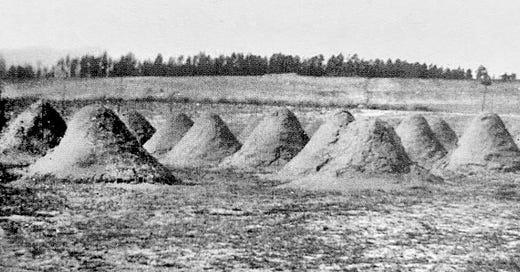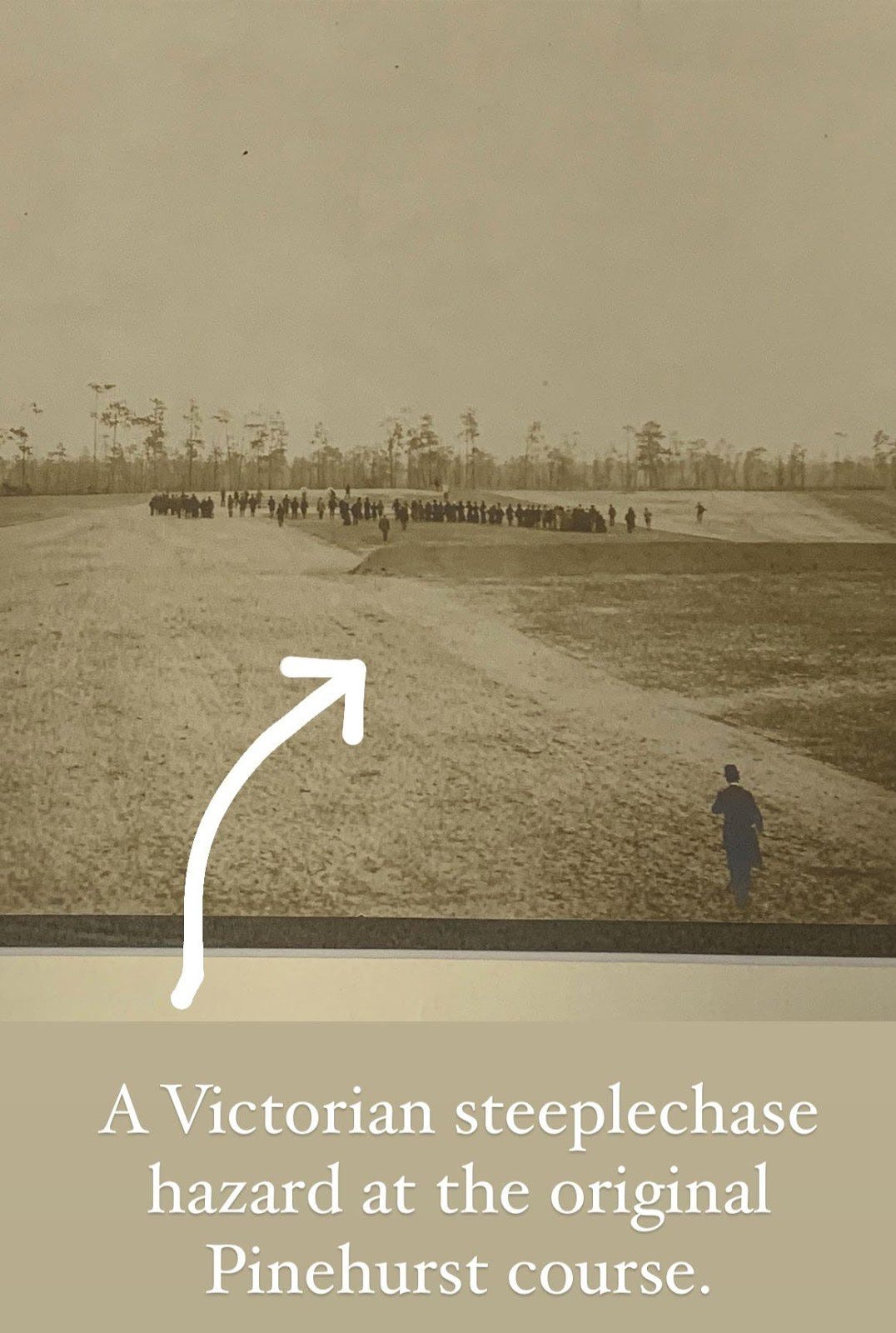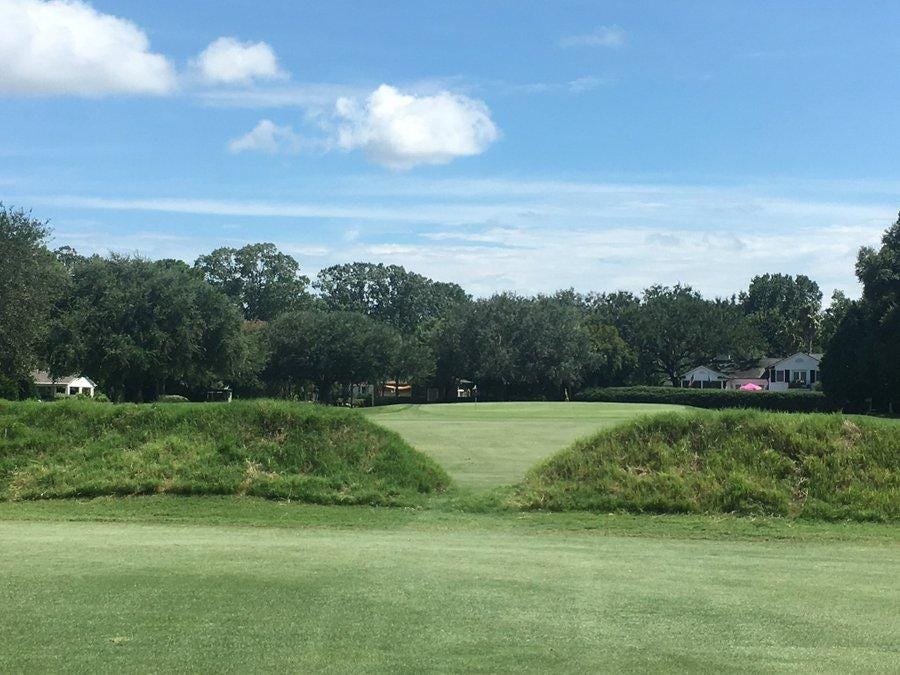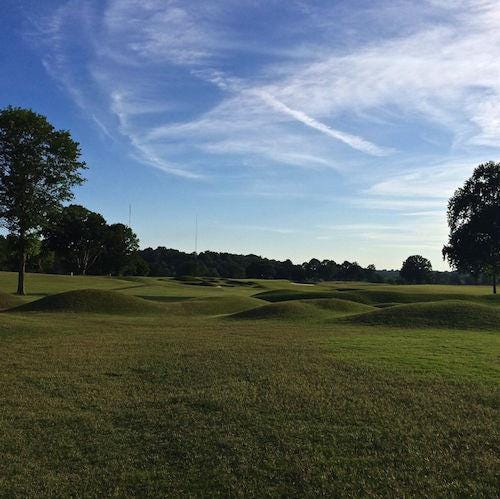Golf course design before the golden age of golf architecture was wild. Referred to as the Victorian era, it spanned roughly from 1820 to 1914. The term "Victorian" might bring to mind images of English aristocracy. However, during this period, golf became a game for the common man, spurred on by the Industrial Revolution.
During this time, familiar terms like bogey, par, and birdie entered common golf parlance. The Haskell ball was invented in the late 1800s, and club makers began experimenting with different designs to maximize distance and ball control. These innovations are commonplace to us now, but golf course design in the Victorian era was anything but ordinary.
Victorian design principles were markedly different from what we see today or even during the golden age of golf architecture. Features like straight lines, strict proportions, and brutal symmetry led to penal-style golf courses. If there were any bold features to begin with, they were often used as hazards for the tee shot. Approach play was, for the most part, uninteresting and flat.
Despite this, some of these designs did include strange and sometimes downright quirky features. For example:
The Steeplechase
A Victorian steeplechase at the original Pinehurst course. Society of Golf Historians
The steeplechase is a mound of dirt or grass built up from the regular playing surface. These mounds can sometimes run across the entirety of the fairway. The steeplechase typically has a steep face with a shallow back.
Another example of a steeplechase at the Country Club of Charleston. Country Club of Charleston
The purpose of the steeplechase is to stop ground play. Where players could normally bounce balls into target areas using the ground, a steeplechase forces them to play an aerial game. Shots must be elevated to pass over the mounds. The placement of the mounding in the fairway can make it a strategic decision on which club to use off the tee. If located in the landing zone, a player must decide whether to lay back or swing hard to carry the mounding.
Circus Ring
A circus ring at Wawashkamo in northern Michigan. Wisconsin.Golf
A circus ring is a ring of longer grass surrounding the shorter grass of a green site. This feature prevents the use of the ground game. Instead of running the ball up onto the green, players are forced to loft their approach and/or pitch shots onto the green. Failure to do so can result in the ball being buried in the thicker, taller grass surrounding the green, with no guarantee that the next shot will stay on the green.
Cops
A cop, located in the middle of the fairway on the bottom right at Chambers Bay. Chambers Bay
Cops are raised mounds that are a Victorian design principle still somewhat commonly seen today. These mounds may be located in or around fairways, but their shape can vary. As seen in the "island of rough" in the fairway at Chambers Bay, cops force players to make a decision: play left, right, or swing hard to try and carry the mound.
A more familiar version of a cop is chocolate-drop mounding, named for the shape of the raised mounds—resembling the form of molten chocolate dropped onto a flat surface. Some of the early chocolate-drop mounds were actually piles of boulders, sometimes filled with dirt and grass.
Severe chocolate-drops at the original Pinehurst course. @bamabearcat
Fortunately, chocolate-drops remain a common feature in modern golf course design. For example, renowned architects like Donald Ross incorporated chocolate-drop mounding into courses like Essex County Club, though with a less severe approach than those seen at the original Pinehurst course.
Chocolate-drops at Holston Hills Country Club, a Donald Ross design. Holstonhills.com
Cops, circus rings, and steeplechases were penal features in the late 1800s and early 1900s. The penal nature of these elements was one of the main criticisms of Victorian golf course designs, as they often did not look natural.
As golf became more accessible to the masses, architects began to question why courses like Prestwick and The Old Course at St. Andrews had maintained their allure over time. As the golden age of golf architecture began in the early 1900s, famous architects such as C.B. Macdonald, Alister MacKenzie, Harry S. Colt, Seth Raynor, and Donald Ross revolutionized American golf by employing strategic designs, moving away from purely penal layouts. They drew inspiration from places like The Old Course. Between 1916 and 1930, the number of courses in the United States grew from fewer than 760 to nearly 6,000.
As a result, most Victorian-era courses were either renovated or demolished. So, how can one experience such architectural wonders today? If you're lucky enough to have access to some of the world’s top 100 golf courses, some of these Victorian design features may still remain. However, if you don’t, you’re still in luck.
Foxburg Country Club, which claims the title of the oldest continuously operated golf course in the United States, is currently planning a restoration to return to its original Victorian design from 1887. Despite its name, Foxburg CC is a semi-private course in western Pennsylvania with tee times available to the public. As of 2025, Foxburg CC is accepting donations to fund this restoration. More information can be found on their website:
https://www.foxburgcountryclub.com/
.











Great read, perhaps some of these features making a come back. The steeplechase has been used at Old Barnwell for example